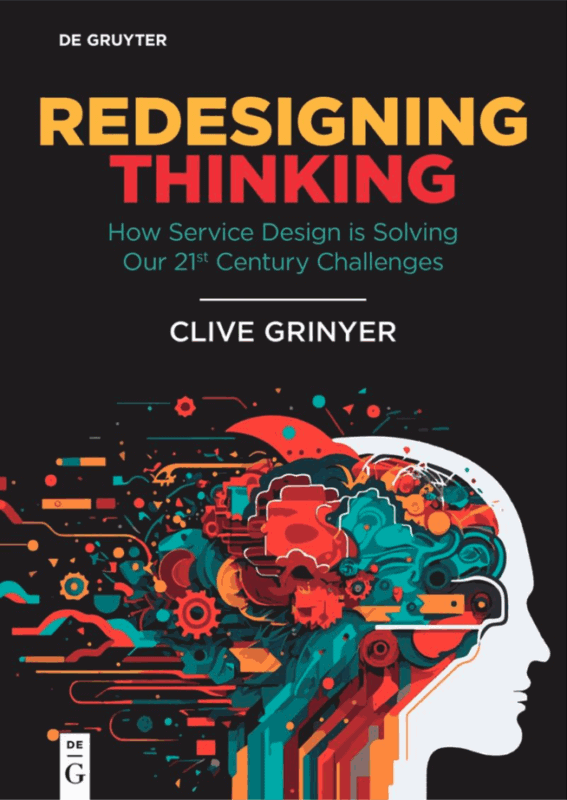Redesigning America
Design is not just nice to look at, but a fundamental process of decision-making that helps us build a better life for everyone. Even Joe Biden and Donald Trump can agree on that.
Design is a topic that brings a lot of preconceived ideas, and not all of them favorable. When I say I’m a designer, people assume that I must work in fashion. I might mention my one-time colleague Sir Jony Ive, designer of most things Apple and now a new generation of devices for OpenAI. That’s an improvement.
But when the President of the United States publishes a decree entitled “Improving Our Nation Through Better Design,” that makes people sit up. In August of this year, the White House published a document that starts with the statement:
“America has long led the world in innovation, technological advancement, and design. But with a sprawling ecosystem of digital services offered to Americans, the Government has lagged behind in usability and aesthetics. There is a high financial cost to maintaining legacy systems, to say nothing of the cost in time lost by the American public trying to navigate them. It is time to fill the digital potholes across our Nation.”
This was, to say the least, not expected. This clear statement of problem and ambition and the connection of design to how well the world works is precisely the topic of my new book, Redesigning Thinking: How Service Design is Solving Our 21st Century Challenges. As a head of design for several global companies and in my time as Head of Service Design at the Royal College of Art in London, I have seen how the application of design methods across every aspect of a consumer or citizen’s experience has hugely beneficial results. The benefits of design may manifest as profit, reduced complaints and long-term customer loyalty in a commercial context, or as better healthcare, easier access to government services, or care for the elderly across society.
Usable and Beautiful
In announcing a new national initiative, “America By Design,” President Trump aims to start by “breathing new life into the design of sites where people interface with their Government. It is time to update the Government’s design language to be both usable and beautiful.” This will be facilitated by a new National Design Studio led by a Chief Design Officer who will be tasked with “improving websites and physical sites that have a major impact on Americans’ everyday lives” with first results achieved by the national holiday of July 4th, 2026. Wow, good luck!

This feels like a breakthrough moment – when a national government and the Office of the President acknowledge the impact of poor design and sets such a radical ambition to improve the experience of US citizens.
You may be surprised to know that we’ve been here before. In December 2021, as America recovered from global pandemic, President Biden announced the “Executive Order on Transforming Federal Customer Experience and Service Delivery to Rebuild Trust in Government” with the ambition to solve the complex 21st-century challenges that face the nation.
“Government must be held accountable for designing and delivering services with a focus on the actual experience of the people whom it is meant to serve.” He captured the need to use technology to modernize government, remove the ‘time tax’ of the relentless form-filling required for disaster survivors, single parent, immigrants, small business owners or veterans who wait months for the Government to process the benefits they are entitled to.
“I celebrate that two politically opposed presidents both agree on the vital role that design plays in the lives of US citizens.”
President Biden’s ambition was more detailed than President Trump’s, specifying online passport renewal, easier tax payments, a redesign of the Fish and Wildlife website and the need to simplify medical treatment through telehealth. Again, the link between the efficiency provided by technology and the requirement to ensure equitable and inclusive access to services for all, was at the heart of the policy.
Biden’s executive order also decrees that customer experience and service delivery will be improved by listening to the voice of the customer, using human-centered design methodologies, empirical customer research, an understanding of behavioral science, and user testing for both digital services and other channels.
Wow again! I celebrate that two politically opposed presidents both agree on the vital role that design plays in the lives of US citizens and the importance of improving our everyday interactions.
Back to the Drawing Board
In Redesigning Thinking, I explore how the methods of design can not only help us find better outcomes for everyday life, but also solve the larger challenges of the 21st century.
For many, everyday services and technology remain difficult to access. In an age of AI and amazing technological advances, we still can’t set the clock on our kitchen ovens when the clocks are changed every six months. Technology is seen as a panacea for all problems, but poor design leads to a spectrum of difficulties: frustrating log-ins, systematic bias and inequity – and occasionally something hugely damaging, as in the case of the Horizon system used by UK Post Office franchises that miscalculated their daily takings, resulting in many unjust criminal prosecutions.
In the UK, the ten-year program to redesign government services removed individual department websites and replaced them with a single gov.uk destination. Creating a set of principles, the first one being ‘Start with User Needs,’ has revolutionized the experience of every citizen. It was a political initiative that launched an army of empathetic, creative designers who improved life for all citizens.
“Design is a fundamental action that we all engage with.”
Design is a fundamental action that we all engage with, whenever we make a strategic, political or management decision. Design is not a nice-to-have, or a luxury. It’s a way of balancing the economic, technical and human factors that are present in every interaction with a business or society. As Nobel Prize-winning economist Herbert Simon put it, “everyone designs who devises courses of action aimed at changing existing situations into preferred ones.”
The tools designers use to design everything around us – from our cars to our healthcare services – are useful to us all. “Redesigning Thinking,” a term that came out of conversation with the great social champion and founder of the Big Issue street newspaper, Lord John Bird, identifies how we can benefit from thinking about who we are designing for; how we can solve their problems and provide value, in the words of President Trump, efficiently and beautifully.
I celebrate that in this polarized climate, a publicly announced ambition to focus on design so that the US can better serve its citizens will successfully transcend politics and encourage us all to redesign our thinking to bring positive change. Let’s redesign America, and the rest of the world too!
Out now in paperback and eBook
[Title Image by filo/Getty Images]
